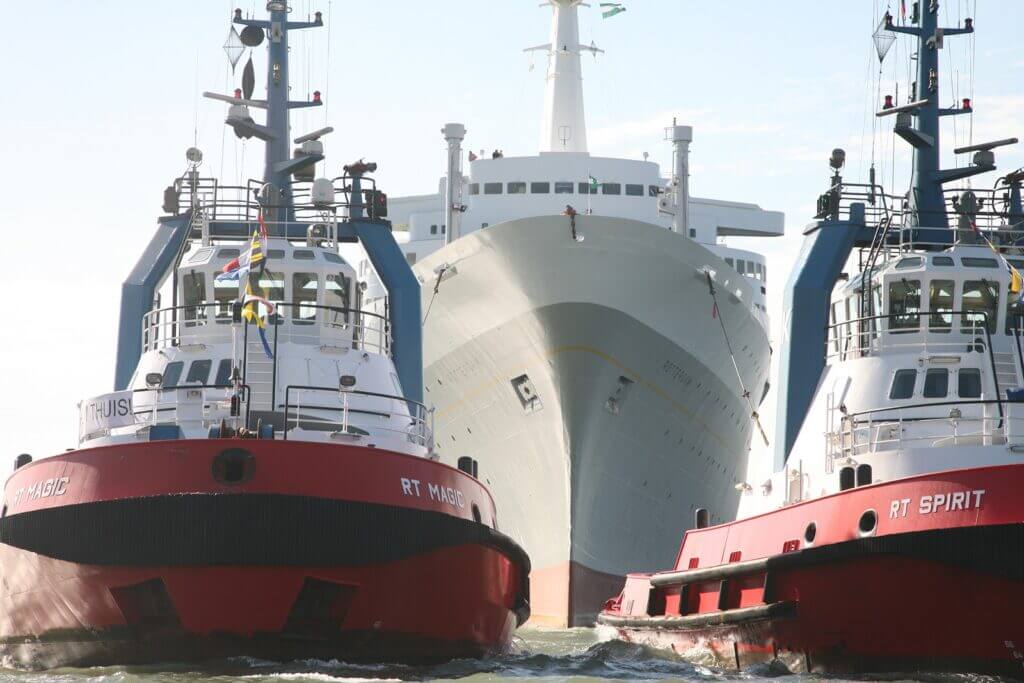Atlantic Towage and Marine Ltd have completed their most prominent salvage consent to date along with Blue Sea Marine after adequately raising the tall boat Astrid. The multifaceted salvage movement saw the Astrid being lifted from rocks where she sank in mid July and lifted onto a skimming scow.
The 42m tall boat Astrid was partaking in a Social issue venture, bound for Kinsale, when on 24th July she experienced engine disillusionment and was blown onto shakes near the Sovereign Islands off Kinsale during strong southerly breezes.
The guideline vessel incorporated the action was Atlantic Towage and Marine’s draw Sea Bank, used as a dive reinforce vessel and was helped by the 15m force Trojan, their pilot barge Sea Fellow was used as an oil defilement response vessel, and moreover used in the movement was the fast RIB Sea Sprinter.
Atlantic Towage and Marine enrolled a sheerlegs from GPS Marine to finish the lift.
Prior to the lift, jumpers cleared free rigging and debris from the Astrid, fitted solid lashes to the vessel’s edge, and fixed fuel lines and fuel tanks, to balance 3.5 tremendous measures of diesel, which remained on the vessel from causing a pollution hazard. The Map book, which has a 400 ton lifting limit brought the 300 ton Astrid to the surface in a movement, which took a couple of hours
The Map book, with the Astrid suspended from its shoot progressed toward Kinsale Harbour towage where the tall boat was moved onto a flat top cargo transport, checked and handed over to the owners and insurance.
The focal governing body of Canada starting late revealed a plaque respecting the unassuming force and its noteworthy activity in BC’s improvement. Pulls and towing was a critical bit of BC progression, since all issues of things moving all through close channels and questionable waterway, significant fjords were all around move by pull and flatboat. BC’s draw industry created a huge marine gathering around Vancouver. Unmistakable marine industry names from the region include: Partnered, Seaspan, Rivtow, Beaudrill, Wagner, PMC, ComNav, Ulstein, Burrard Iron Works, Kobelt, et cetera. To the degree pulls are concerned, hardly any will battle the noteworthiness of Robert Allan Ltd in the overall force publicize, present day plans drawn from the rich BC pull industry inheritance. Clearly, pulls are basic to BC and Canada’s Marine industry.
At any rate since the highs of the Canadian marine industry, back in the mid eighties, essentially based around Vancouver and the western Ice, things have been going downhill. Almost certainly the organization shows up never going to move on decreasing the sea shore front marine industry in western Canada. Game plans allowing rough log charge shut inestimable plants and the different ocean side force providers they depended upon – this put various BC inhabitants jobless, and lessened BC pull limit altogether. At the same time, maybe less exciting than on the East Coast, the calculating activities were reduced, centering the benefit to point into less hands, again putting various BC mariners out of action. The usage of “brief remote workers”, Drifting Exchange Act Waivers over the latest 15 years have furthermore broken down any certainty later on for the waterfront marine industry in BC.
In a proposal to get more income, with the endowment of Transport Canada, directors discarded approved draftsmen introduced pulls, especially around the Port of Vancouver. Owners fought that inside the Vancouver Port, pulls are close to their order post and along these lines could “run home” in a troublesome circumstance, and as such could oversee without engineer locally accessible the pulls serving the harbor. The issue is that the pulls have gotten basically confusing and now they have broadly more quality than they had when this avoidance was permitted. By then, the port of Vancouver created, amalgamating the Fraser Surrey port and Deltaport, consequently did beyond what many would consider possible. Issue is by and by the port of Vancouver, one could battle, joins the whole of Georgia Waterway. Taking everything into account, a great deal of pulls in excess of 1000 hp sail with no approved marine architects locally accessible these mind boggling vessels.
With these concessions, it is by and by shoot times for harbor pulls, and destiny times for officer administration (not irrationally there is less trees being cut – they are just being set up in Asia) the “outside boat” continuously stopped to exist on account of a nonattendance of hypothesis, nonappearance of pay and nonattendance of people – considering the way that there is less open entryway for experience and movement. More diminutive outfits filled in with more diminutive boats, that, tonnage sagacious, didn’t require a similar number of people, especially not marine authorities. In this way, various incidents have happened consistently, pulls sinking, flatboats guiding into the stones. Another draw with four gathering people, sank, just this week, on the north arm of the Fraser conduit. This isn’t strange, when unnecessarily little of equipment to manage excessively colossal of an occupation is used.
Ocean Guide
The latest vessel to join the Atlantic Towage and Marine naval force is the Sea Guide, an especially versatile in-harbor pull, whose shallow draft and tremendous wheelhouse makes her ideal as a diagram vessel or plunge support vessel. Atlantic Towage brokers and Marine starting late contracted Mooney Vessels to gracefully and fit another crane to the Sea Guide, and present an extraordinarily structured weight driven A Casing, new winch and quick release tow catch. Mooney Vessels in like manner made the transom removable to engage working over the brutal, ie wrinkling, seabed leveling and towing. On completing the planning works, the Sea Guide got another paint work from beginning to end.


